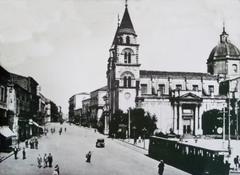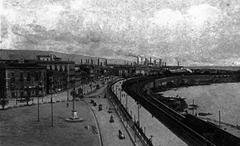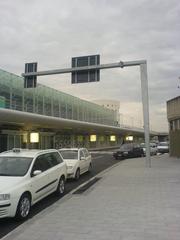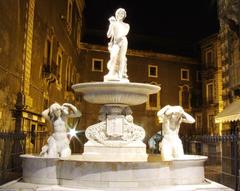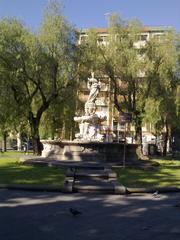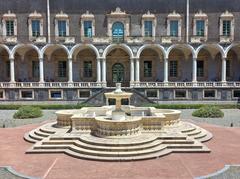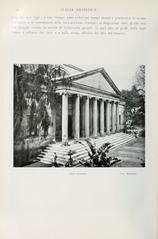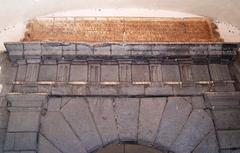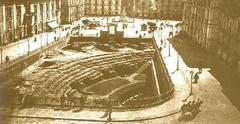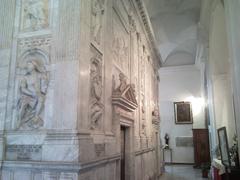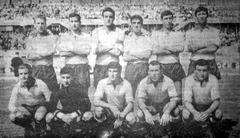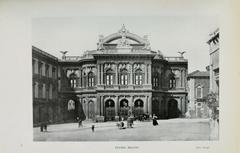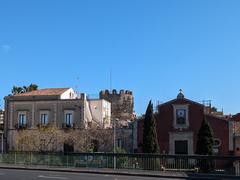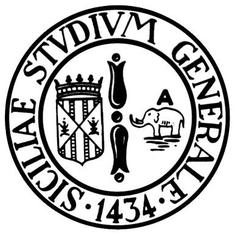
Museo Biscari: Visiting Hours, Tickets, and Guide to Catania’s Baroque Gem
Date: 04/07/2025
Introduction
Palazzo Biscari, home to the historic Museo Biscari, is one of Catania’s most illustrious landmarks and a peerless example of Sicilian Baroque architecture. Rising from the city’s ancient walls after the devastating 1693 earthquake, the palace not only reflects the artistic grandeur of its era but also stands as a testament to the cultural and intellectual ambitions of the Paternò Castello family. Today, Palazzo Biscari continues to enchant visitors with its opulent interiors, vibrant history, and central role in Catania’s cultural life.
This comprehensive guide covers everything you need to know: from the palace’s storied origins and art-filled halls to practical visitor information such as visiting hours, ticketing, guided tours, accessibility, and nearby attractions.
Table of Contents
- The Origins and History of Palazzo Biscari
- The Museo Biscari: Enlightenment-Era Innovation
- Architectural and Artistic Highlights
- Visiting Hours, Tickets, and Access
- Guided Tours and Special Events
- Accessibility and Visitor Services
- Essential Tips and Nearby Attractions
- FAQs
- Conclusion and Resources
The Origins and History of Palazzo Biscari
Baroque Ambition and Family Legacy
After the 1693 earthquake, Ignazio Paternò Castello III, Prince of Biscari, obtained royal permission to construct a new residence atop Catania’s ancient city walls (palazzobiscari.it; homeinitaly.com). Construction began in 1702, with successive generations expanding and embellishing the palace over the next century. The result: a sprawling complex of over 600 rooms, dramatic staircases, elaborate balconies, and a monumental pincer staircase—a symbol of both aristocratic prestige and the resilience of post-earthquake Catania.
The Biscari Family’s Cultural Influence
The Paternò Castello family were prominent patrons of the arts and sciences. Their palace was not merely a home, but a hub of Enlightenment-era scholarship, hosting collections of antiquities, natural specimens, and works of art. The palace became a magnet for intellectuals, artists, and travelers, including Goethe during his Italian Journey (homeinitaly.com).
The Museo Biscari: Enlightenment-Era Innovation
Foundation and Growth
Established in 1758 by Ignazio Paternò Castello V, the Museo Biscari was among Italy’s earliest private museums (it.wikipedia.org). Purpose-built galleries on the palace’s south and east sides housed collections amassed from local archaeological excavations and European travels. Highlights included:
- Ancient Greek and Roman sculptures
- Coins, medals, and epigraphs
- Natural history specimens (fossils, shells, minerals)
- Decorative arts and paintings
The collections attracted scholars and Grand Tour visitors, cementing the museum’s international reputation (it.wikipedia.org).
Legacy and Transformation
Though the original museum closed in 1924, much of its collection was donated to the Museo Civico Castello Ursino. Palazzo Biscari itself has remained a vibrant venue for art, music, and cultural events, preserving the spirit of its Enlightenment founders (palazzobiscari.it).
Architectural and Artistic Highlights
Exterior Grandeur
Palazzo Biscari’s Baroque facade is a masterpiece of theatrical design, particularly the marina-facing rear with its seven stained-glass windows and white Syracuse stone sculptures set against a black lava base (Dimore Storiche Italiane). The grand portal on Via Museo Biscari, adorned with the family’s heraldic symbols, leads to a once-lush courtyard.
Interior Splendor
- Grand Staircase: A dog-legged staircase welcomes visitors into the palace’s heart, leading to halls lined with portraits and historical scenes.
- Green Room: Elegant painted walls, overdoor artworks, and a terracotta floor inlaid with white stone showcase local craftsmanship.
- Salone delle Feste (Orchestral Ballroom): The palace’s most celebrated space, with a domed ceiling, frescoes, and a minstrel’s gallery for musicians, designed for balls and concerts (Cataniaguide.com).
- Decorative Arts: Stuccoes, frescoes, and family emblems (such as ears of wheat commemorating the grain famine relief of 1763) abound (PeriPeriCatania).
Unique Features
- Minstrel’s Gallery: An oval opening above the ballroom, enhancing acoustics for musicians.
- Roman Mosaic: Preserved in the private quarters, connecting the palace to Catania’s ancient past.
Visiting Hours, Tickets, and Access
- Opening Hours: Typically Tuesday to Sunday, 9:30 AM – 1:30 PM and 3:30 PM – 7:00 PM. Closed Mondays and select holidays. Check the official website for seasonal variations.
- Tickets:
- Adults: €8–€12
- Reduced rates: Students, seniors, groups
- Children under 12: Free
- Purchase: Online or at the entrance. Guided tours are extra and highly recommended (Palazzo Biscari Official).
- Booking: Advance booking is recommended, especially for English-language tours and during peak seasons.
Guided Tours and Special Events
- Duration: 45–60 minutes
- Languages: Italian; English and other languages available with advance request
- Content: Covers palace history, art, architecture, and the Biscari family legacy
- Thematic Tours: Available for private groups (e.g., film history, music)
- Special Events: The palace hosts concerts, exhibitions, artisan markets, and private functions throughout the year—consult the official website or local tourist boards for event schedules (Catania Live University).
Accessibility and Visitor Services
- Wheelchair Access: Ground floor and courtyard accessible; upper floors by stairs only. Staff assistance available—contact ahead for specific needs.
- Restrooms: Available on-site.
- Gift Shop and Café: Local artisan crafts and Sicilian specialties available.
- Photography: Permitted without flash; professional equipment requires authorization.
- Cloakroom: Not available; large bags may be restricted.
Essential Tips and Nearby Attractions
- Getting There: Centrally located near Piazza del Duomo and Via Etnea. Reachable by foot, public transit, or taxi; parking is limited in the historic center.
- Best Time to Visit: Weekday mornings or late afternoons for fewer crowds and optimal lighting.
- Dress Code: Respectful attire is advised.
- Supervise Children: Interiors are delicate and require care.
Nearby Attractions:
- Catania Cathedral (Sant’Agata): Five minutes’ walk.
- Castello Ursino Museum: Houses many original Biscari artifacts.
- Piazza Duomo and La Pescheria: Bustling market and city center.
- Teatro Massimo Bellini: Renowned opera house nearby.
Frequently Asked Questions (FAQ)
Q: Are there guided tours available?
A: Yes, in multiple languages. Advance booking is recommended.
Q: Is the palace accessible for visitors with mobility impairments?
A: The ground floor is accessible; upper floors only by stairs. Contact staff for assistance.
Q: Can I buy tickets online?
A: Yes, via the official website or at the entrance.
Q: Are photography and filming allowed?
A: Non-flash photography is allowed for personal use.
Q: How do I reach Palazzo Biscari by public transport?
A: It’s a short walk from Catania’s main train station and accessible by several bus lines.
Conclusion
Palazzo Biscari is a living testament to Catania’s Baroque grandeur and cultural vitality. From its storied halls and artistic treasures to its ongoing role as a venue for music and art, the palace offers an unforgettable immersion into Sicilian heritage. To ensure a seamless visit, check updated opening hours, book guided tours in advance, and consider exploring the surrounding attractions for a comprehensive experience of Catania’s historic core.
For the most current information—including tickets, special events, and accessibility—visit the Palazzo Biscari official website and trusted travel resources. Enhance your exploration with the Audiala app, offering curated audio guides and insider tips for the best of Catania.


